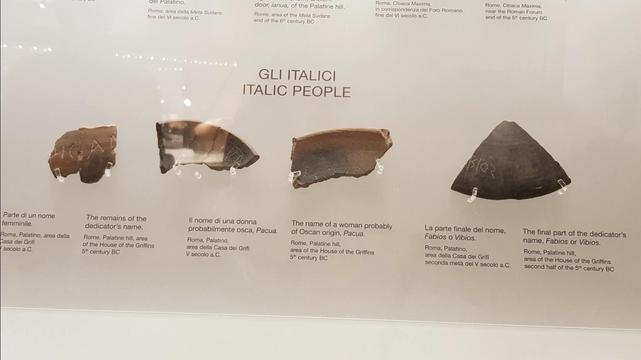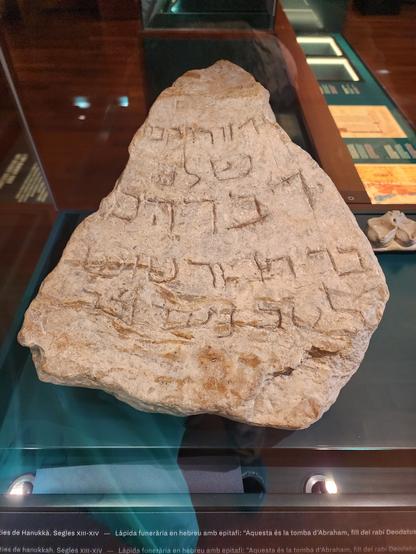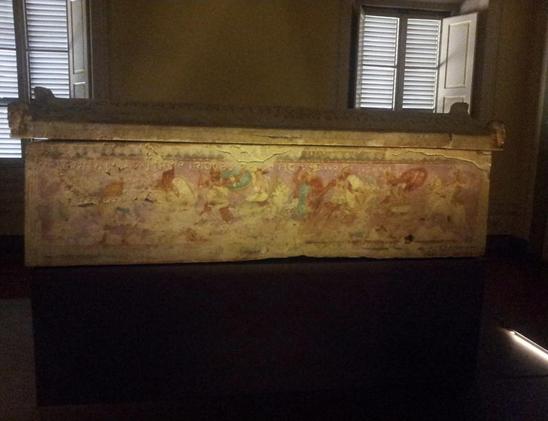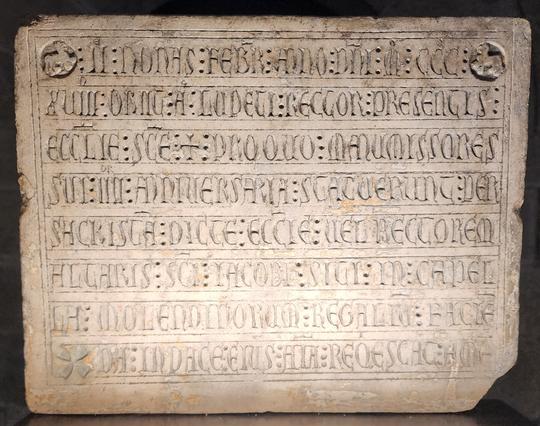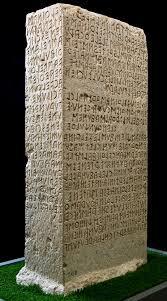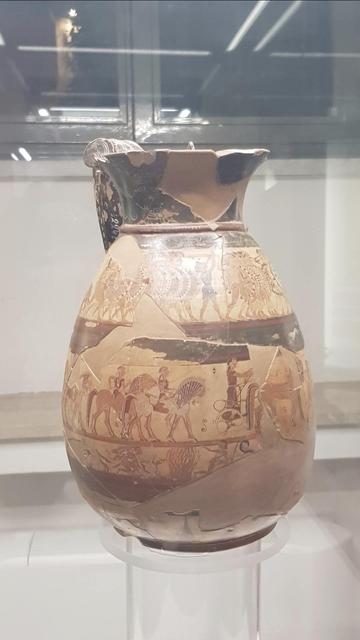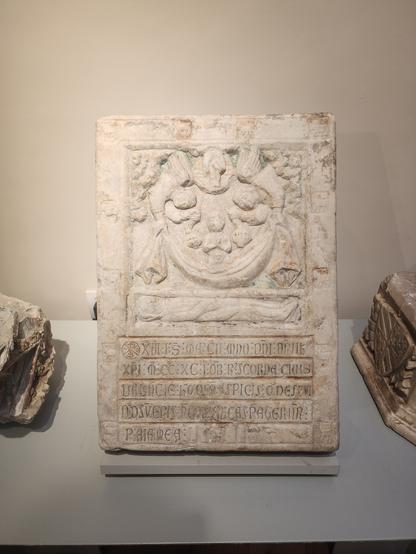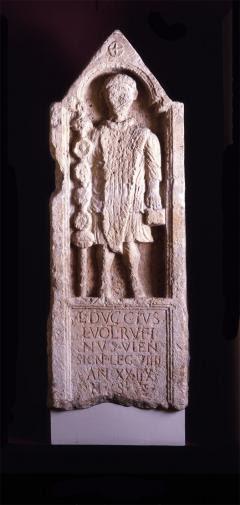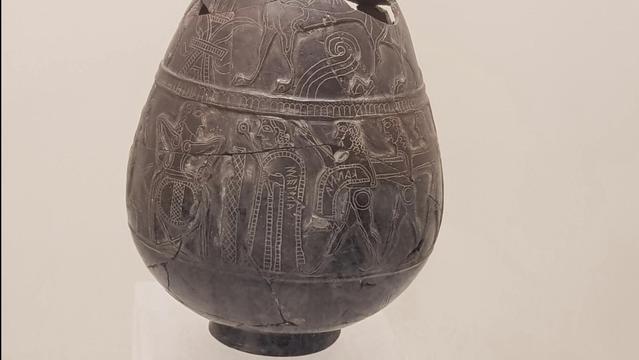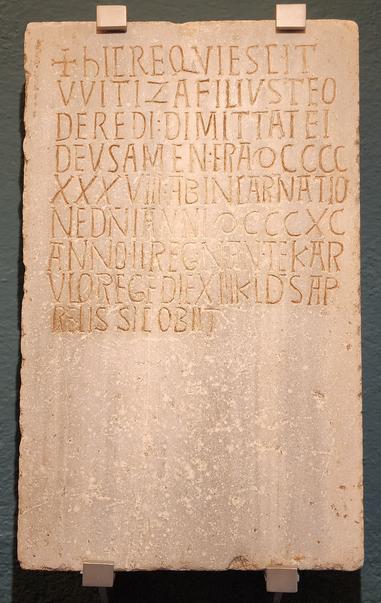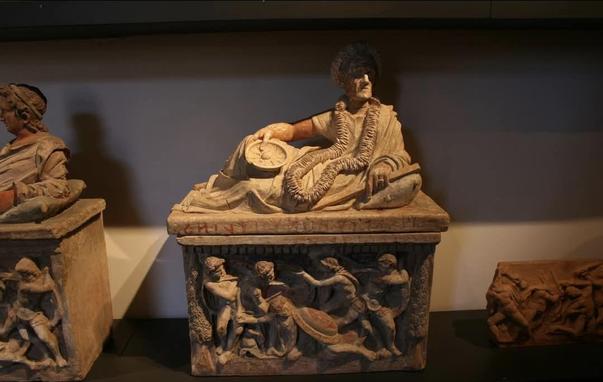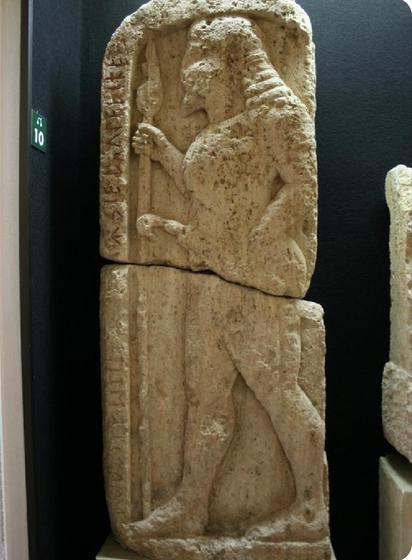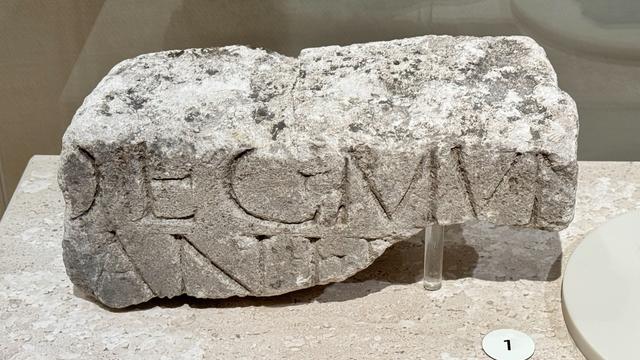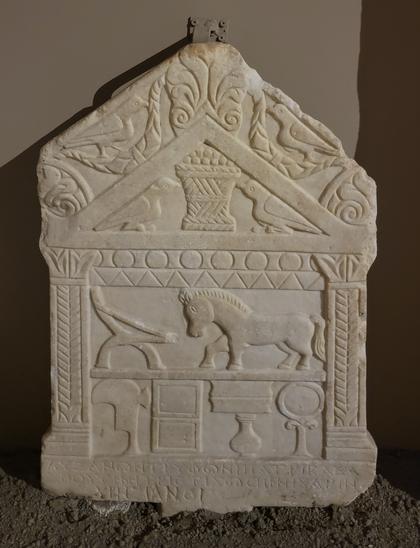These pottery sherds have all graffiti related to the Oscans or Faliscans. They are all found in Rome, so testifying of an early multicultural city in the fifth century BC. In the epigraphical museum in Rome. #EpigraphyTuesday
#EpigraphyTuesday
9th-century tombstone reading, in Hebrew, “This is the tomb of Abraham, son of the Rabbi Deodatus. Let this good young man be remembered."
Casa Padellàs, #Barcelona #Spain 🇪🇸
#EpigraphyTuesday #TombTuesday #Espana #spanien @medievodons @museum #judaism @jewishstudies
A typical Etruscan cremation urn from the National Archaeological Museum in Florence. Wit the deceased pictured lying on a coach, a frieze depicting a battle and an inscription on the edge of the lid in Etruscan letters. #EpigraphyTuesday
This painted alabaster sarcophagus dates to the 4th century BC (c. 350-325 BC). The four sides have polychome dynamic fighting scenes of battling Greeks and Amazons. It has two Etruscan inscriptions. They reveal the name of the deceased, Ramtha Huzcnai. It is now in the National Archaeological Museum in Florence. #EpigraphyTuesday
Funeral stone of a Barcelona rector named Llobet
1318
Casa Padellàs, #Barcelona #Spain 🇪🇸
#EpigraphyTuesday #TombTuesday #Espana #spanien @medievodons @museum
Cippus perusinus has 45 lines of Etruscan. It is a boundary stone found in 1822 memorising a legal contract between two Etruscan families, Velthina (from Perugia) and Afuna (from Chiusi), regarding a cemetery plot. It dates to the 3rd or 2nd century BC. #EpigraphyTuesday
The Chigi olpe was found in an Etruscan tomb at Monte Aguzzo, near Veii, on Prince Mario Chigi’s estate in 1881. The vase depicts the Judgement of Paris. It dates to c. 650–640 BC. Found together with a bucchero vessel that has five lines announcing the ownership of Atianai. #EpigraphyTuesday
For #TombTuesday and #EpigraphyTuesday, this 13th C. gravestone at the Cathedral of Valencia, #Spain 🇪🇸
I especially liked the death scene on this one, described in the alt text.
#MedievalArt #history #glam #museumarchive #espana #medieval
Two impasto bruno pitchers from Civita Castellana dated to the seventh century BC. One has two inscriptions and the other one, but a long one. They have some of the earliest inscriptions in Faliscan. Bought from the antiquarian market so no more info. #EpigraphyTuesday
The Tombstone of Lucius Duccius Rufinus, Yorkshire Museum, York, dated to 71-120 AD. The Roman soldier was from the Ninth Legion. The stone was found in 1688 at Holy Trinity Church in Micklegate. He came from Vienne in France and was a standard bearer. #EpigraphyTuesday
A bucchero vase with human figures and inscriptions naming the characters in Etruscan sinistroverse incised letters. In Villa Giulia. #EpigraphyTuesday
For #TombTuesday and #EpigraphyTuesday, this 10th-century tombstone of a man named Wittiza.
Casa Padellàs
#Barcelona #Spain 🇪🇸
Latin transcription and modern translations in image description.
#history #medieval #glam #museum #espana #museumarchive #medievalhistory
The Pyrgi tablets contain a bilingual inscription in Etruscan and in Phoenician. Two of the tablets are in Etruscan and one in Phoenician. It may be an ancient treaty, dated to the consulships of Lucius Junius Brutus and Lucius Tarquinius Collatinus (509 BC). #EpigraphyTuesday
This Faliscan kylix has a painted Faliscan inscription 'foied vino pipafo, cra carefo', 'today I will drink wine, tomorrow I will not have any'. From the second half of the fourth century BC. Now in Villa Giulia. #EpigraphyTuesday
A typical Hellenistic Etruscan cremation urn from Chiusi. It has the deceased lying on a divan, an inscription declaring his name and a battle scene in relief in front. #EpigraphyTuesday
The funeral stele of Avile Tites dates to 560-540 BC. The inscription is a so called speaking object inscription and says that the stele is of Avile Tites and gives the name of the person ywho gave the stele. It stood near the princely tomb of the warrior. #EpigraphyTuesday
This inscription was discovered outside The Hague in 1910. It reads DEC(urio) MVN(icipii), the formal title of councillors a town with Municipium rights. Long-lost Forum Hadriani was one of only two such towns in the Netherlands and capital of the Romanised Cananefates. #EpigraphyTuesday 🗃️🏺 📸 me
A votive Venetic writing tablet with lists of vowels, consonants and pairs of consonants plus a votive inscription from Este. Venetic was inscribed between 6th and 1st centuries BC in northern Italy. This tablet dates to the second half of the first century BC. #EpigraphyTuesday
The Novilara Stele was allegedly inscribed in the North Picene language. This language was so named as opposed to the South Picene that was also found in ancient Picenum in Italy. All inscriptions now in North Picene are considered forgeries. #EpigraphyTuesday
For #TombTuesday and #EpigraphyTuesday, this Late Roman grave stele in the #Istanbul #Archaeology Museum 🇹🇷
The inscription reads, "Auxanos (made)(this grave) in memory of his father Tryphon and mother Auxanousa, when she was still living. Christians."
